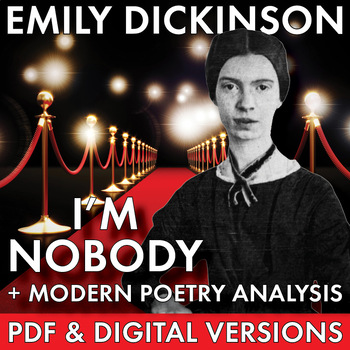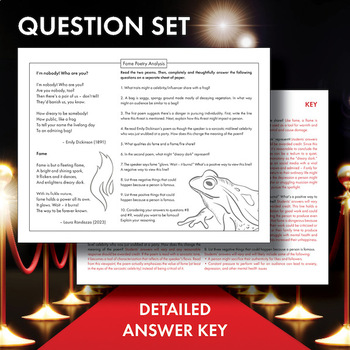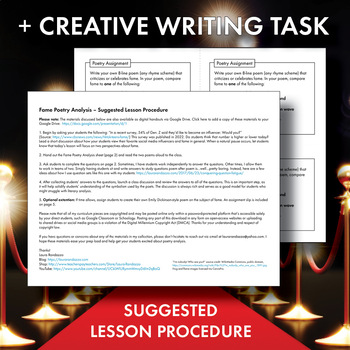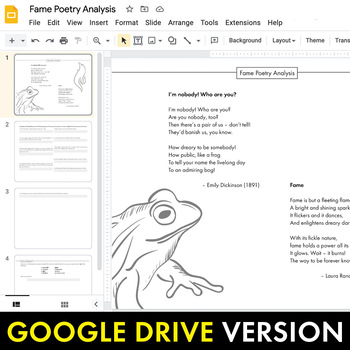Emily Dickinson “I’m Nobody” Poetry Analysis + Modern Poem, Fame Theme, CCSS
- PDF
- Google Apps™

What educators are saying
Description
This easy to deliver one-day lesson uses the work of American poet Emily Dickinson to guide a discussion of many students’ dream of becoming a social media influencer/TikTok Famous. The student handout includes a copy of Emily Dickinson’s well-known poem, “I’m Nobody! Who are You?,” to compare with a modern poem written on the same theme. The handout includes a set of 10 short-answer critical thinking questions that will require students to dig back into the text and their own minds to find the answers.
This download also includes a suggested lesson procedure page, an optional poetry assignment, and a detailed answer key to make grading easy and help guide class discussion.
This product downloads as a PDF and includes a Google Drive version of the student handouts for online learners.
Want students to learn more about Emily Dickinson’s life and literary impact? Click here for a student-led research activity: https://www.teacherspayteachers.com/Product/Emily-Dickinson-Author-Study-Worksheet-PDF-Google-Drive-Biography-CCSS-3301906
Want more materials to help students get excited about studying American literature? Click here and scroll down to browse my catalog of American Lit. items: https://www.teacherspayteachers.com/Store/Laura-Randazzo/Category/American-Literature-40247
Thanks for stopping by!
Red carpet image licensed via CanvaPro
Emily Dickinson photo credit: Daguerrotype of Emily Dickinson, c. early 1847, Amherst College Archives & Special Collections, WikiMedia Commons, Public domain





